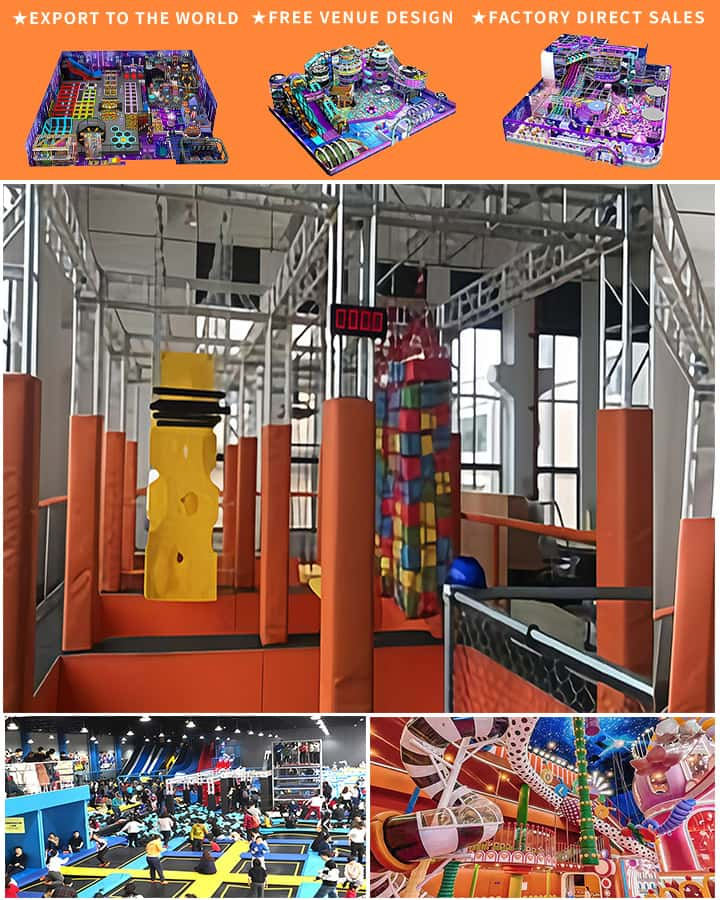Ensuring that preschool playground equipment supplies and equipment meet high standards is essential for the safety and developmental benefits of young children. A well-equipped playground not only provides a fun environment but also contributes significantly to physical, social, and cognitive growth. This article explores the critical aspects of selecting quality preschool playground equipment supplies and the benefits they bring to early childhood education.
Safety First
Safety is paramount when it comes to playground equipment. High-quality materials and construction are crucial to prevent injuries. Suppliers should offer products that comply with international safety standards, such as those set by the American Society for Testing and Materials (ASTM) or the Consumer Product Safety Commission (CPSC). Features to look for include:
- Non-Toxic Materials: Ensure that all equipment is made from non-toxic, lead-free materials to protect children from harmful substances.
- Smooth Edges: Equipment should have smooth edges and surfaces to prevent cuts and abrasions.
- Sturdy Construction: Robust and durable construction can withstand rough play and environmental conditions.
- Appropriate Size: Equipment should be appropriately sized for preschool-aged children, reducing the risk of accidents due to improper fit or scale.
Developmental Benefits
Quality playground equipment offers more than just physical activity; it supports various aspects of child development:
Physical Development
Outdoor play helps develop gross motor skills through activities like climbing, running, and jumping. Balance bikes, seesaws, and slides enhance coordination and strength. Well-designed playgrounds encourage active play, which is crucial for healthy growth and fitness.
Social Skills

Playgrounds are social spaces where children learn to interact with peers, share, and take turns. Group activities on playsets foster cooperation and teamwork, vital skills for social development. Interactive elements like tetherball or group swings can provide opportunities for guided play and structured interaction.
Cognitive Development
Creative play structures, such as sandboxes, water tables, and themed play areas, stimulate imagination and problem-solving. Sensory-rich environments with varied textures, colors, and sounds help develop sensory processing skills and cognitive function.
Emotional Growth
Playgrounds provide a safe space for emotional expression and stress relief. Swings, for instance, can offer a calming effect, while challenging climbers can build resilience and confidence. Emotionally supportive designs consider inclusivity, ensuring that children of all abilities feel welcomed and engaged.
Types of Essential Playground Equipment
To create a well-rounded preschool playground, consider incorporating the following types of equipment:
Traditional Play Structures
- Slides: Offer thrilling fun that promotes balance and coordination.
- Climbers and Ladders: Enhance physical strength and problem-solving skills.
- Seesaws: Foster cooperative play and basic physics understanding.
Imaginative Play Areas
- Sandboxes: Great for tactile exploration and creative building.
- Water Tables: Encourage scientific thinking through interactive play with water.
- Themed Playsets: Castles, pirate ships, or jungle gyms spark imaginative storytelling.
Active Play Equipment
- Ride-on Toys: Tricycles or rocking animals promote balance and coordination.
- Trampolines: Boost cardiovascular health and motor planning.
- Balance Beams: Develop coordination and concentration.
Inclusive Equipment
- Accessible Structures: Wheelchair-accessible swings and ramps ensure that all children can participate.
- Adaptive Toys: Sensory-rich items like textured balls or musical instruments cater to diverse needs.
Maintenance and Longevity
Regular maintenance is key to ensuring that playground equipment remains safe and effective over time. Supplies should come with clear care instructions, but here are some general tips:
- Routine Inspections: Regularly check for wear and tear, loose parts, or any signs of damage.
- Cleaning: Keep equipment clean to prevent the spread of germs and maintain hygiene.
- Repairs: Address any issues promptly to avoid more significant problems or hazards.
- Upgrades: Stay updated with new safety features and replace outdated equipment periodically.
In conclusion, investing in high-quality preschool playground equipment supplies and equipment is an investment in the children’s future. By prioritizing safety, supporting developmental goals, and maintaining the playground, educators can create enriching environments that promote growth, learning, and joy.




